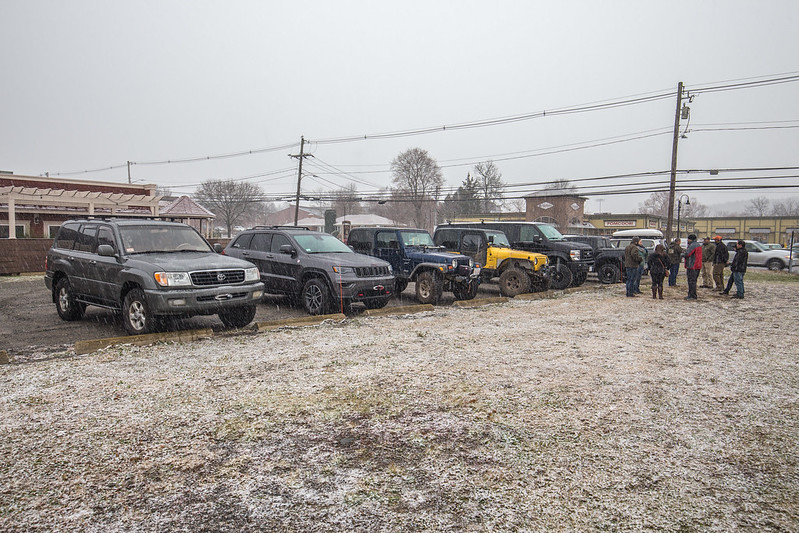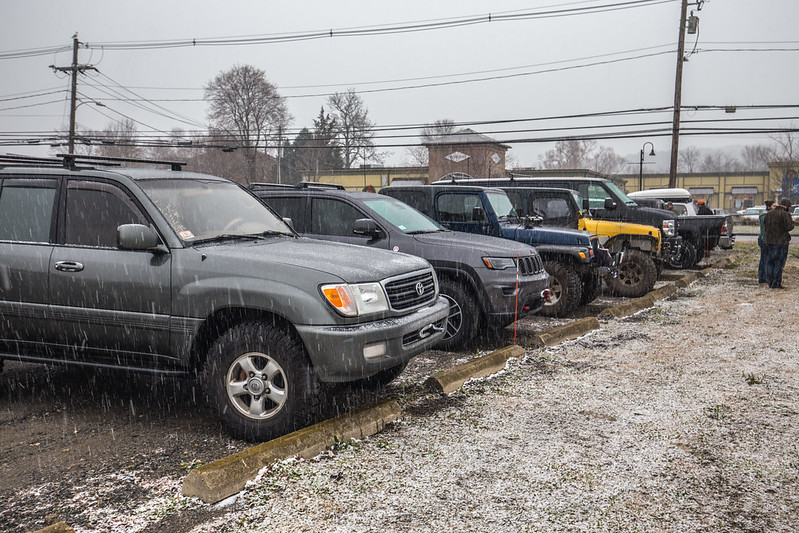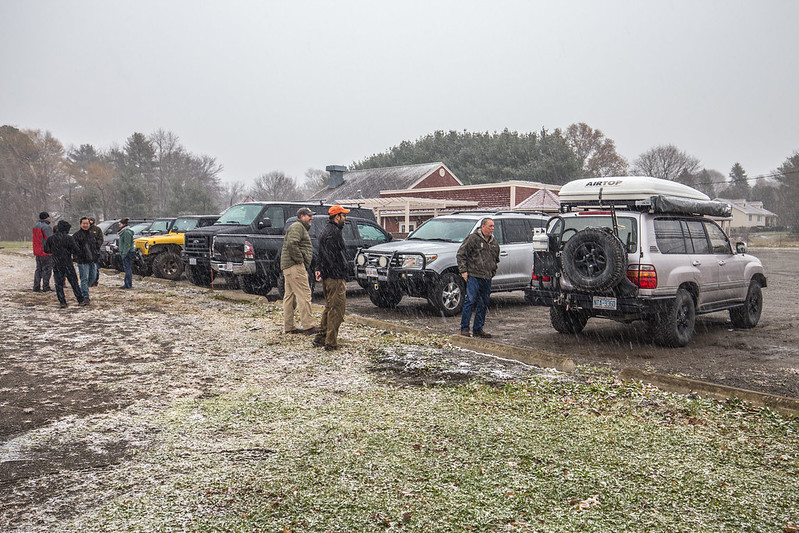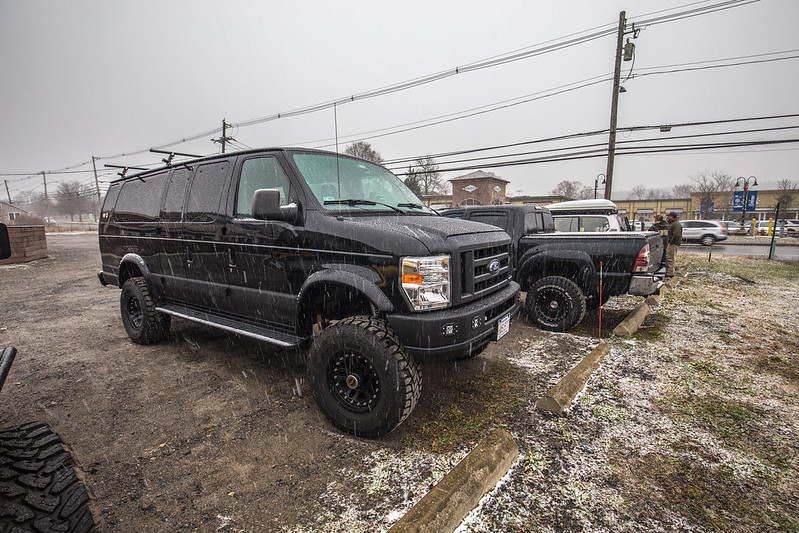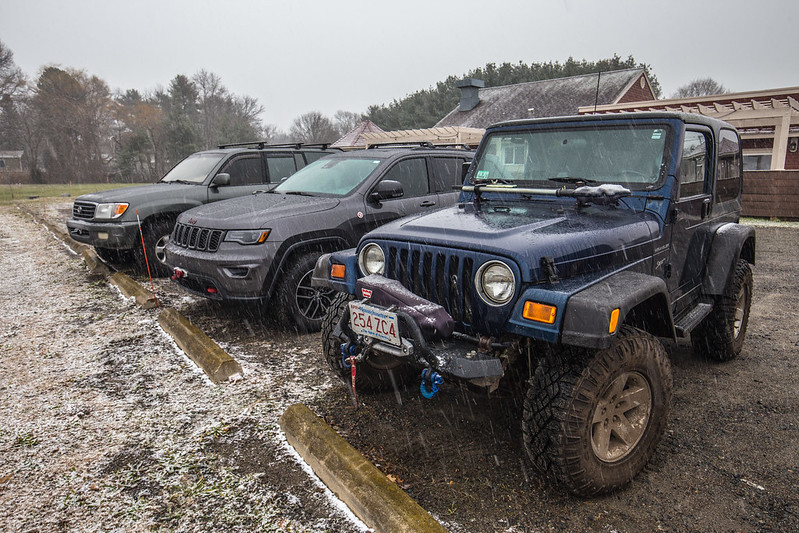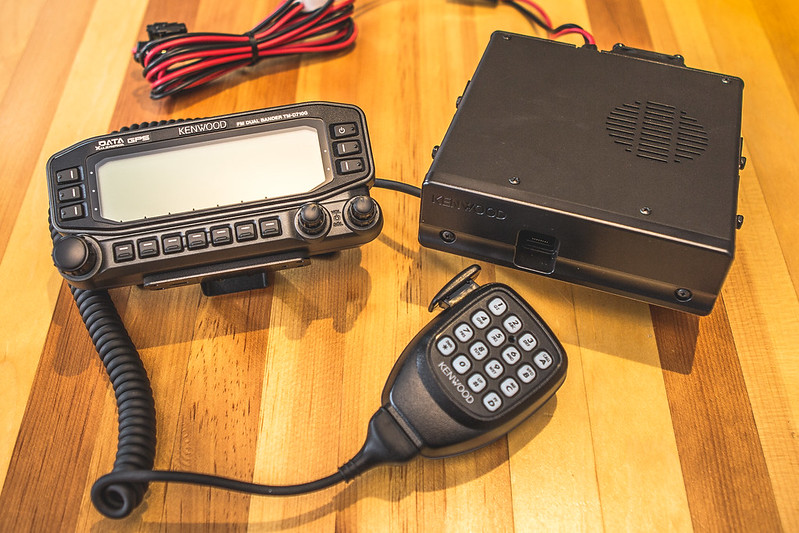Ryan-- I read through your recent trip up through Canada and was wondering if you could share details of the gear/stuff you brought (in the pelican cases). In particular, what did you use and what would you not bring next time?
Always happy to help. It's on my list to update the overland section of 2180miles.com with our gear for this trip. The gear pages of my hikes are some of the most heavily trafficked pages of the entire website.... people love to know!
Pelican #1 - 1610:
- Coleman 2-burner Stove
- Coleman Camp Fuel
- Kitchen Utensils (cooking & eating)
- 2x Plates & Bowls
- Lighters, with matches as back-up
- Box of nitrile gloves for food prep
- Lysol disinfectant wipes
- Large hand sanitizer bottle
- Bug spray, sun lotion
- 10x10 tarp
Pelican #2 - 1620:
- First Aid Kit
- REI Quarterdome-2 Tent
- 40-degree 2p Sleeping Bag
- Exped Synmat Duo - 2p Sleeping Pad
- Thermarest Neo-Air 1p Sleeping Pad
- ENO Doublenest 2p Hammock
- 10" Frying Pan
- 8" Cooking Pot
Pelican #3 - 1620:
- 2x Canon EOS 6D bodies
- Canon EOS T2i Rebel
- Canon EF 70-200mm f/4 L
- Canon EF 50mm f/1.8
- Canon EF 24-70mm f/2.8 L
- Canon EF 16-35mm f/4.0 L
- Canon EF-S 18-55mm f/3.5-5.6
- Rokinon 14mm f/2.8
- DJI Mavic Pro Drone
- Lowepro Flipside 300 bag
- Spare batteries, Pelican SD Card holder, Chargers, etc.
- Craftsman 200-piece Mechanic Toolkit
- 10,000lb Tree Saver - 10'
- 25,000 Tow Strap - 20'
- 3x Spare D-Rings
- 2x Baofeung UV-82 Radios
…that's off the top of my head 5 months after the trip, so there may have been a few other things. I did a gear check-list but I don't have it accessible on this computer currently. We had lengthy discussions while crossing the sometimes mind-numbing plains of Manitoba regarding future storage options. The Pelicans worked well at campsites to take out and put back mass amounts of gear at one time. Weight in each was between 30 and 60 pounds. They were strapped down to the custom rear deck that I built and recently documented on here.
We had a lot of space devoted to clothing. With it being a trip of many climates, and Dani being a Florida girl, we had lots of options for layers for Boston summers all the way through the possibility of snow in Banff/Jasper. The day on the Athabasca glacier was in the 40s with 20+mph winds, one night at a backcountry site we dropped into the very low 30s. Dani brought two bags of clothing, and I packed mine all into a my custom-built winter backpacking 60L bag. I am much more versed with layers and adjusting to multiple climates, so I had it a bit easier. We had 2x pairs of shoes each, trail runners for hiking and sneakers for around-town and more relaxed days. I do not believe in above-the-knee boots unless there's 4 inches of snow and more is on the way... obviously footwear doesn't apply to every adventure, so you can ignore this if it doesn't matter to you.
We never used the hammock. I really wanted to, but our time in Jasper was limited and our campsite in Banff was horrible. That, the Craftsman tool kit, and the first aid kit were basically the only things we did not utilize on the trip... the latter two I'm happy we missed out on using. My biggest complaint was our dry food storage. We used a big reusable shopping bag and piled things in. Products in boxes took up too much space, items that were crushable certainly got ground to dust, and the whole thing was just awkward. We found our groove after the first day or two on the QB-5 Backcountry Adventure through Ontario, and didn't do much reorganizing for the rest of the trip. I'd like to perfect food storage for trips in 2018, which may be easier if we can manage a roof-top tent. Clearing out an entire Pelican of gear would be great, and allow for a reassignment of space.
To answer your question about the fridge: It was the single greatest investment I made for this set-up in 2017. The ability to keep things cold is not only great for refreshment at the end (or middle) of a hot day, but also allowed us to carry foods I'd otherwise have ignored. Having to refill ice, drain melted water, etc. is all too much for me! We set the temperature to 29 degrees so that the stuff on the bottom would stay closer to frozen and the stuff on top was chilly... It performed flawlessly throughout, we never once had a voltage issue with the WK2, and I was thankful for it every time I opened the lid. For what it's worth, Dometic's USB charger on the back is a great little addition to campsite electronics recharging.
I get to be longwinded when I write, so please forgive me. Hopefully this is useful information at least to some extent. I'm happy to answer more questions, or revisit previous ones in more detail if you'd like. Below is probably the only photo I have of the interior during our expedition. (For some silly reason the forum throws a server error when I try and connect the image to this post...)
Best,
Ryan
